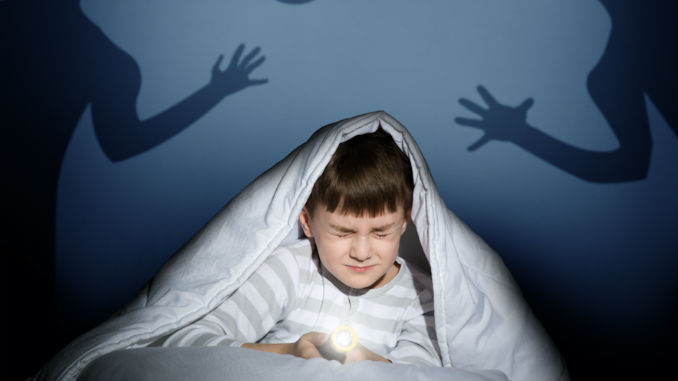
Best ways to make Halloween celebrations no trick and all treat for kids with Sensory Processing Disorder (SPD).
Published: September 30, 2018
By: Sarah Lyons
Costumes, Halloween parties with sugary treats, trick-or-treating and spooky decorations are fun and exciting for most kids, but for a child with Sensory Processing Disorder (SPD), Halloween celebrations can be downright overwhelming.
Sensory-sensitive kids have trouble processing input from any of the five senses in a normal way. What is background music to others may be loud and distracting to such kids. Costumes may feel too itchy, makeup may feel sticky and masks may have a strong scent or may be too restricting.
As a mom of a child with SPD, I have learned firsthand how challenging Halloween can be. My daughter struggles daily to find clothes that are comfortable and are not too distracting. Typically, if we find a pair of pants she likes, I buy as many pairs as we can find. Loud noises or new situations can also be very stressful for her. She has the desire to be part of the fun on Halloween, but as the day approaches the pressure may be too much, the costume may be too uncomfortable and walking around in the dark knocking on strangers’ doors may be too scary. I usually end up frustrated and she ends up disappointed. But this year we are taking a different approach to the holiday by following these tips, which can help other families dealing with SPD enjoy Halloween, too.
PREPARE YOUR CHILD
Prior to the big day, talk about how you will celebrate. Discuss what situations may be challenging and what will help your child feel more comfortable. If door-to-door trick-or-treating is scary, try a practice run. Ask neighbors, friends or family if your child can knock on their door before the day of Halloween so he or she will know what to expect. Have your child try on the costume and make any needed adjustments to make it feel as comfortable as possible.
COSTUMES
This is usually a huge challenge for a child with SPD but luckily there are a lot of options. For instance, wearing her favorite clothes and painting her face is what makes my daughter feel comfortable. Other kids may like wearing their favorite pajamas or other soft clothing under a costume so they don’t feel the itchy fabric on their skin. If your child does not want to dress up at all, try letting the little trick-or-treater ride in a decorated wagon to still feel like part of the fun.
Other simple ideas: use a prop, find a silly T-shirt or incorporate tools, such as noise-canceling headphones, into your child’s costume. And never make your child feel that they are odd if they don’t like to dress up or go trick-or-treating.
PLAN AHEAD
Try to be flexible and prepare a backup plan. My daughter was very excited about Halloween and even wore her costume to school, but when the time came to go trick-or-treating with her siblings, she was overwhelmed. It is OK if your child decides to stay home and hand out candy, needs to take a break during trick-or-treating or wants to head home early. Parents may also look for alternative fun activities, such as a nearby church’s fall party that’s not scary, costume-optional and offered during the day.
It’s understandable that Halloween traditions may not always sound appealing or make sense to kids with SPD. Consider coming up with your own traditions, such as painting pumpkins, baking treats or going to dinner or a movie. With a little extra effort, planning, practice, and flexibility, Halloween can be a holiday that’s fun for sensory-sensitive kids as well as the rest of your family.
